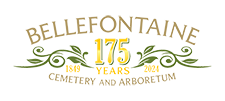Horticulture Supervisor, Kyle Cheesborough
 When thinking of gardening, most people will conjure thoughts of bright flowers, colorful annuals, fresh vegetables, etc. Often overlooked are the grasses – perennial and annual – that add so much to the landscape in terms of color, form, and texture. Native grasses, like prairie dropseed (Sporobolus heterolepis) and little bluestem (Schizachyrium scoparium), are excellent additions to a natural or native landscape, but they also play well in perennial borders. These native grasses provide contrasting textures to the broad-leaved perennials and shrubs, and the little bluestem sports a sky-blue tint to its leaves, with hints of crimson along the flowering stems.
When thinking of gardening, most people will conjure thoughts of bright flowers, colorful annuals, fresh vegetables, etc. Often overlooked are the grasses – perennial and annual – that add so much to the landscape in terms of color, form, and texture. Native grasses, like prairie dropseed (Sporobolus heterolepis) and little bluestem (Schizachyrium scoparium), are excellent additions to a natural or native landscape, but they also play well in perennial borders. These native grasses provide contrasting textures to the broad-leaved perennials and shrubs, and the little bluestem sports a sky-blue tint to its leaves, with hints of crimson along the flowering stems.


Other native grasses, such as Indian grass (Sorghastrum nutans) and big bluestem (Andropogon gerardii), are very large prairie grasses, often too big for a small home garden as they grow to eight feet in height. However, for those with room, Indian grass and big bluestem are exceptional grasses with regards to wildlife. A number of skipper butterflies use Andropogon as a host plant, and the pepper-and-salt skipper uses Sorghastrum as its larval host. In addition to these butterflies, Missouri’s tall-grass prairie grasses are the primary food source for myriad grasshoppers, in turn providing a delicious insectivorous treat to predators. Birds find the tall, erect foliage of Indain grass perfect for nesting. Toads, lizards, small birds and mammals all use the tufts of prairie dropseed, little bluestem, Indian grass, and big bluestem to seek cover from predators. In addition to our Missouri-native grasses, there are plenty of exotic grasses that grow exceptionally well in our climate.

For an annual grass that will add texture and color to a planting, pink muhly grass is an airy, bluish-green grass with gorgeous pink-to-red flowers arising in late August and into fall. Hameln grass (Pennisetum alopecuroides ‘Hameln’) is a dwarf fountain grass, perennial in Missouri, that provides fluffy plumes and foliage under three feet, and is a nice clumping grass for a medium-moisture, full sun spot in the garden.

The Karl Foerster feather reed grass (Calamagrostis x acutiflora ‘Karl Foerster’) is a stiff, upright, tall grass that adds an excellent affect to the back of the garden border, with cream-white with pink flowers beginning in May and persisting on the stems well into winter. Few plants rival the fall and winter attributes of both the native and exotic perennial grasses. Hues of rust-orange, yellow, purple, and crimson are common in fall on ornamental grasses. The persistent foliage lasts through winter on many of these species, well after going dormant, providing a textural affect when many of our garden perennials have tucked themselves away beneath the leaf litter and soil.
The cemetery has worked diligently to restore native plantings in order to nurture and encourage our wildlife. I found this American Goldfinch enjoying one of our planting beds.

compiled by Cara L. Crocker

Post a comment